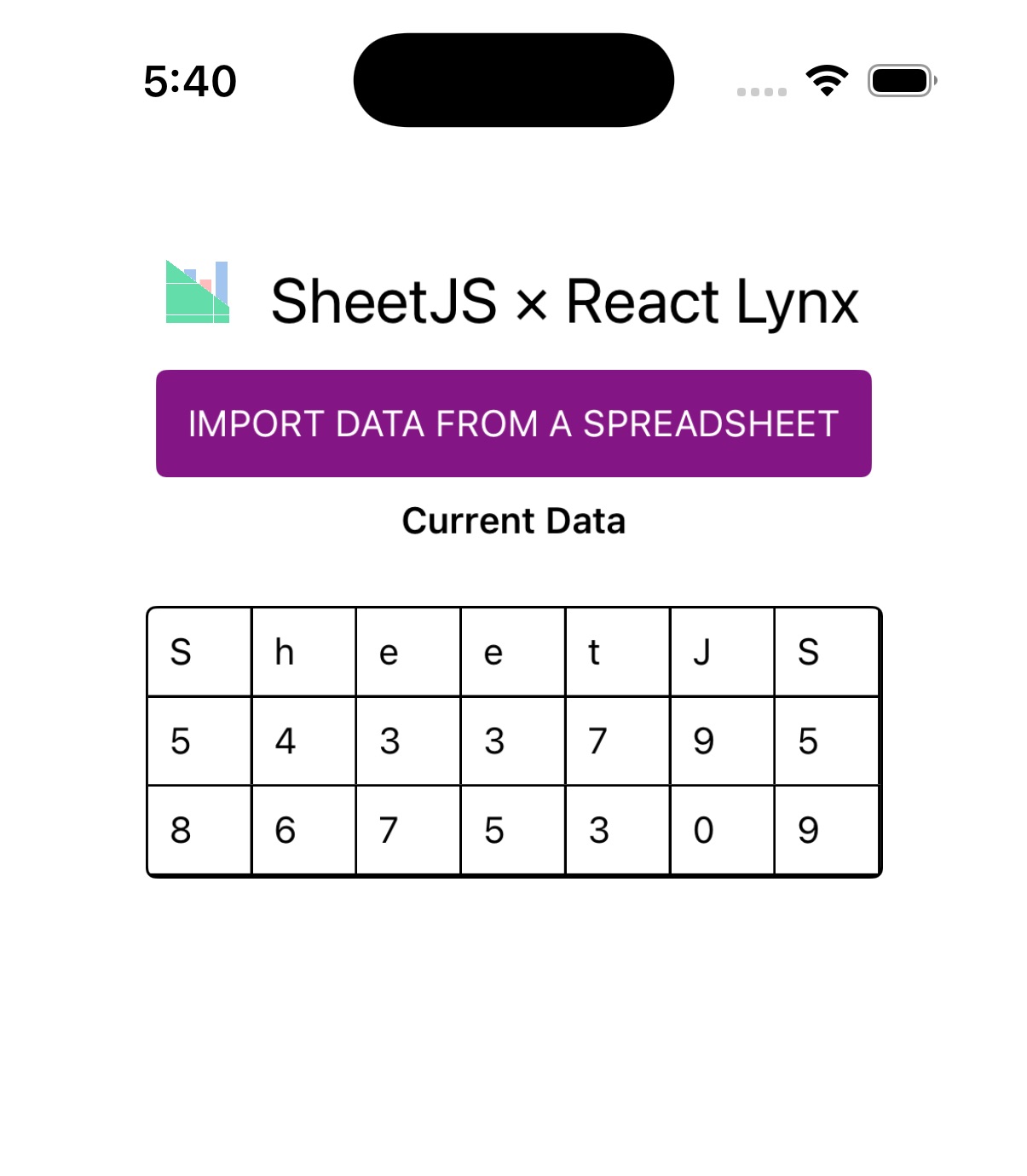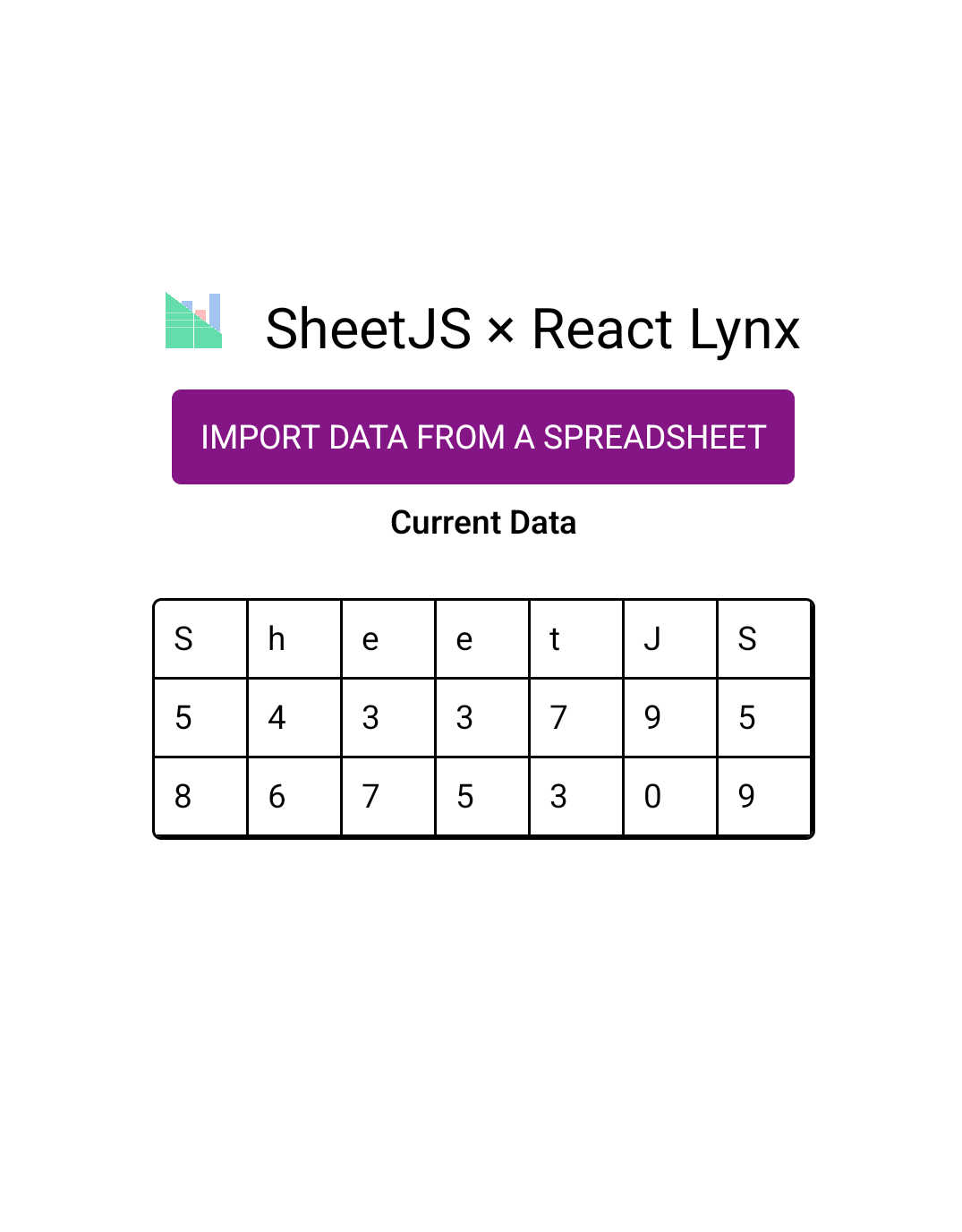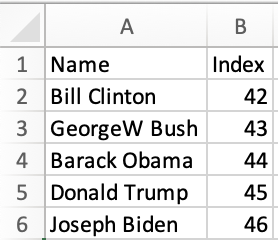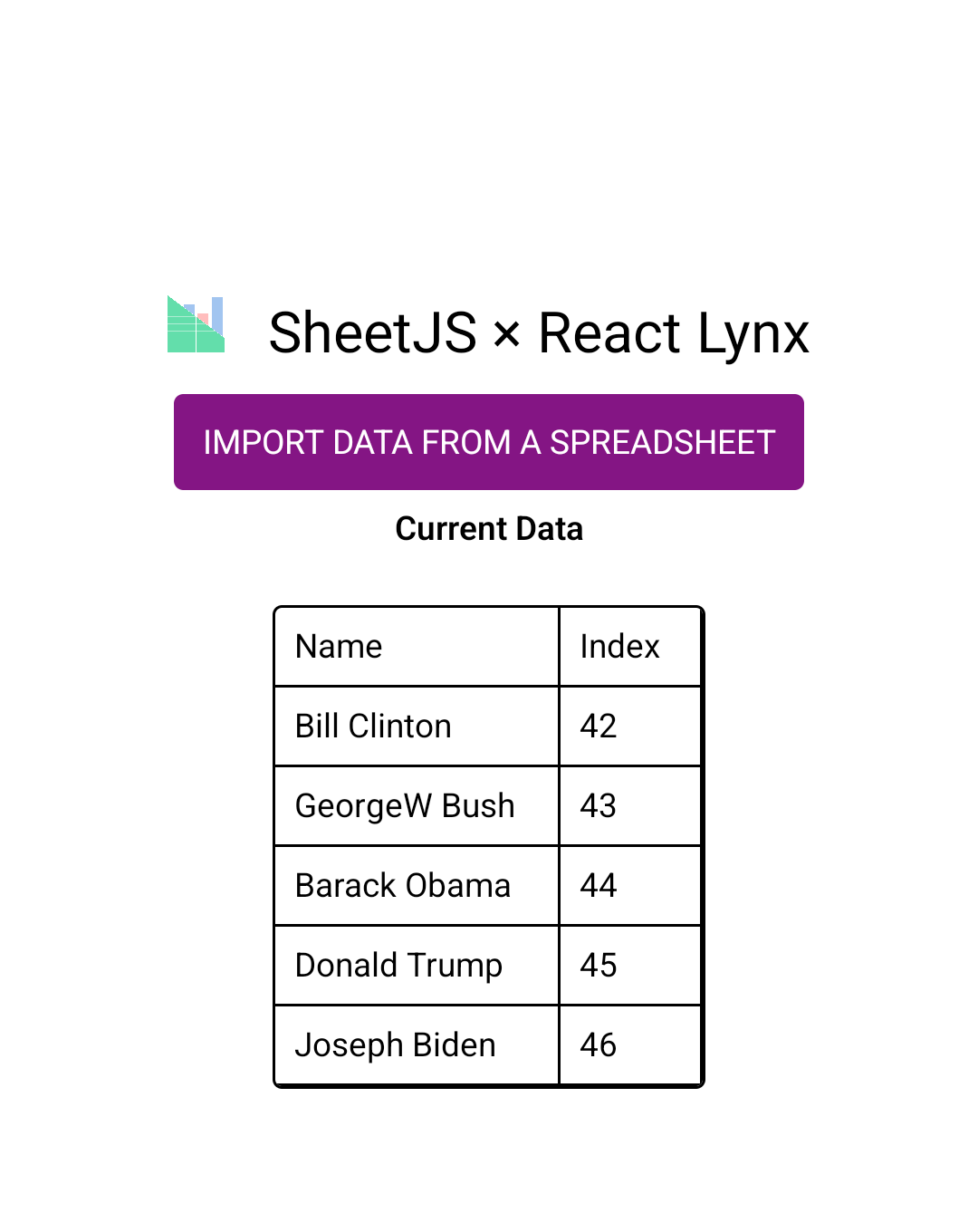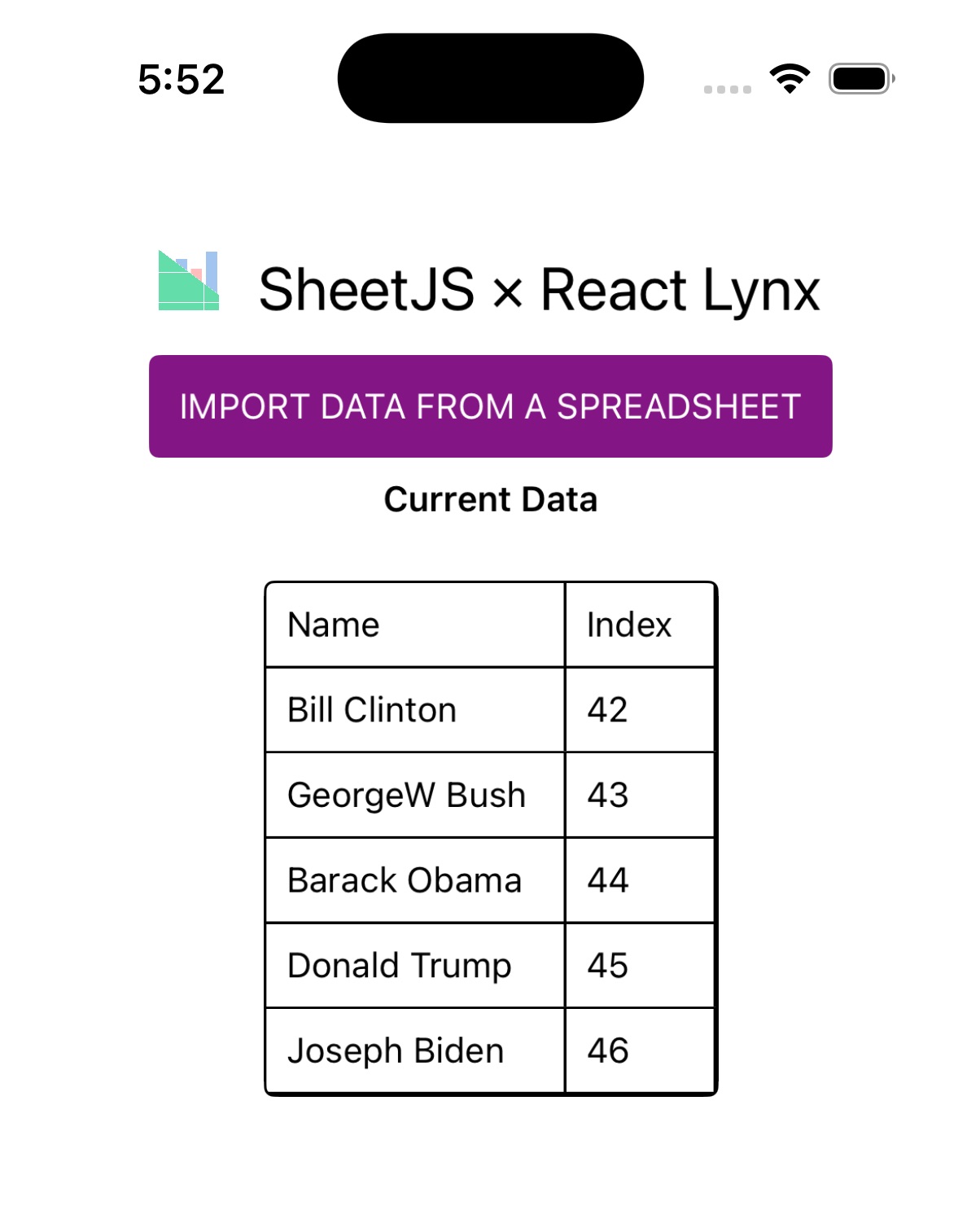Sheets at Native Speed with Lynx
Lynx is a modern cross-platform framework. It builds iOS, Android and Web apps that use JavaScript for describing layouts and events.
SheetJS is a JavaScript library for reading and writing data from spreadsheets.
Lynx is relatively new and does not currently have a deep community.
Any issues should be reported to the Lynx project for further diagnosis.
This demo uses React (using ReactLynx) and SheetJS to process and generate spreadsheets. We'll explore how to load SheetJS in Lynx apps in the following scenarios:
- "Fetching Remote Data" uses the built-in
fetchto download and parse remote workbook files.
The "Fetching Remote Data" example creates an app that looks like the screenshots below:
| iOS | Android |
|---|---|
|
|
Before testing this demo, follow the official React Lynx Guide!1
Follow the instructions for iOS (requires macOS) and for Android. They will cover installation and system configuration. You should be able to build and run a sample app in the Android and the iOS (if applicable) simulators.
Lynx development requires an Apple Silicon-powered Macintosh!
Integration Details
The SheetJS NodeJS Module can be imported from any component or script in the app.
Internal State
For simplicity, this demo uses an "Array of Arrays"2 as the internal state.
| Spreadsheet | Array of Arrays |
|---|---|
| |
Each array represents a row in the table.
This demo also keeps track of the column widths as a single array of numbers. The widths are used by the display component.
const [data, setData] = useState<any[]>([
"SheetJS".split(""),
[5, 4, 3, 3, 7, 9, 5],
[8, 6, 7, 5, 3, 0, 9]
]);
const [widths, setWidths] = useState<number[]>(Array.from({ length: 7 }, () => 20));
Updating State
Starting from a SheetJS worksheet object, sheet_to_json3 with the header
option can generate an array of arrays:
/* assuming `wb` is a SheetJS workbook */
function update_state(wb) {
/* convert first worksheet to AOA */
const wsname = wb.SheetNames[0];
const ws = wb.Sheets[wsname];
const data = utils.sheet_to_json(ws, {header:1});
/* update state */
setData(data);
/* update column widths */
setWidths(make_width(data));
}
Calculating Column Widths
Column widths can be calculated by walking each column and calculating the max data width. Using the array of arrays:
/* this function takes an array of arrays and generates widths */
function make_width(aoa) {
/* walk each row */
aoa.forEach((r) => {
/* walk each column */
r.forEach((c, C) => {
/* update column width based on the length of the cell contents */
res[C] = Math.max(res[C]||60, String(c).length * 10);
});
});
/* use a default value for columns with no data */
for(let C = 0; C < res.length; ++C) if(!res[C]) res[C] = 60;
return res;
}
Displaying Data
Lynx does not ship with a component for displaying tabular data.
The demo uses Lynx <view/> and <text/> elements to display tabular data:
{/* Table container */}
<view className='Table'>
{/* Map through each row in the data array */}
{data.map((row, rowIndex) => (
<view key={`row-${rowIndex}`} className="Row">
{/* Map through each cell in the current row */}
{Array.isArray(row) && row.map((cell, cellIndex) => (
{/* Cell with dynamic width based on content */}
<view
key={`cell-${rowIndex}-${cellIndex}`} className="Cell"
style={{ width: `${widths[cellIndex]}px` }}>
{/* Display cell content as text */}
<text>{String(cell)}</text>
</view>
))}
</view>
))}
</view>
Fetching Remote Data
This snippet downloads and parses https://docs.sheetjs.com/pres.xlsx:
/* fetch data into an ArrayBuffer */
const ab = await (await fetch("https://docs.sheetjs.com/pres.xlsx")).arrayBuffer();
/* parse data */
const wb = XLSX.read(ab);
Fetch Demo
This demo was tested in the following environments:
Simulators
| OS | Device | Lynx | LynxExplorer | Dev Platform | Date |
|---|---|---|---|---|---|
| Android 35 | Pixel 3a | 0.8.6 | 3.2.0-rc.1 | darwin-arm | 2025-03-26 |
| iOS 18.3 | iPhone 16 Pro | 0.8.6 | 3.2.0-rc.1 | darwin-arm | 2025-03-26 |
When this demo was last tested, there was no simple standalone guide for running Lynx apps on real devices.
First install Lynx by following the Guide!1.
Make sure you can run a basic test app on your simulator before continuing!
-
Install Lynx dependencies
-
Create project:
npm create [email protected] -- -d SheetJSLynxFetch -t react-ts --tools biome
- Install shared dependencies:
cd SheetJSLynxFetch
curl -o ./src/assets/SheetJS-logo.png https://docs.sheetjs.com/logo.png
npm i
npm i -S https://cdn.sheetjs.com/xlsx-0.20.3/xlsx-0.20.3.tgz
- Download
App.tsxinto thesrcfolder:
curl -o ./src/App.tsx https://docs.sheetjs.com/lynx/App.tsx
- Download
App.cssinto thesrcfolder:
curl -o ./src/App.css https://docs.sheetjs.com/lynx/App.css
- Start the development server:
npm run dev
Keep the window open.
Android
- Start the Android emulator:
- Android Studio
- Command Line
In Android Studio, click "More actions" > "Virtual Device Manager". Look for the emulated device in the list and click the ▶ button to play.
List the available emulators with emulator -list-avds:
shjs@sheetjs SheetJSLynxFetch % emulator -list-avds
Medium_Phone_API_35
^^^^^^^^^^^^^^^^^^^--- emulator name
The emulator name should be passed to emulator -avd. In a previous test, the
name was Medium_Phone_API_35 and the launch command was:
emulator -avd Medium_Phone_API_35
On macOS, ~/Library/Android/sdk/emulator/ is the typical location
for the emulator binary. If it cannot be found, add the folder to PATH:
export PATH="$PATH":~/Library/Android/sdk/emulator
emulator -avd Medium_Phone_API_35
- Download the LynxExplorer4 APK.
The latest test used LynxExplorer-noasan-release.apk for version 3.2.0-rc.1.
- Drag and drop the APK into the Android emulator window.
The emulator will install LynxExplorer.
- In the terminal window from step 5, copy the HTTP link. It will be printed below the QR code, as shown in the following screenshot:
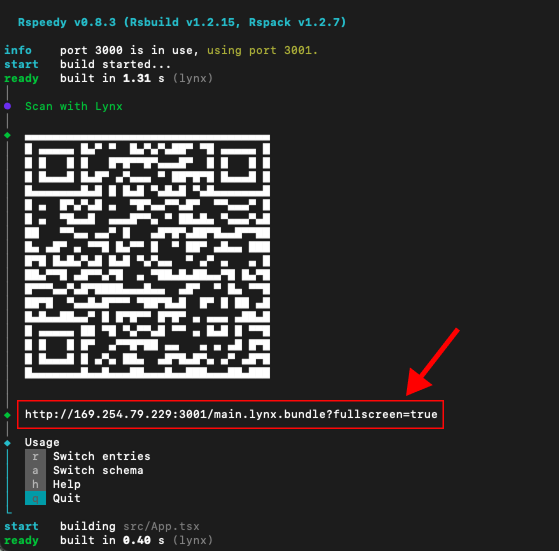
-
In the emulator, open the "LynxExplorer" app.
-
In the Enter Card URL input field, paste the link. Tap Go.
The view will refresh. The app should look like the "Before" screenshot:
| Before | After |
|---|---|
|
|
- Tap "Import data from a spreadsheet" and verify that the app shows new data. The app should look like the "After" screenshot.
iOS Testing
iOS testing can only be performed on Apple hardware running macOS!
Xcode and iOS simulators are not available on Windows or Linux.
- Download the LynxExplorer4 app tarball.
The latest test used LynxExplorer-arm64.app.tar.gz for version 3.2.0-rc.1.
- Open
LynxExplorer-arm64.app.tar.gzusing Finder.
The tarball contains an app named LynxExplorer-arm64 .
-
Launch the iOS Simulator.
-
Click and drag
LynxExplorer-arm64into the Simulator window.
The simulator will install the "LynxExplorer" app.
- Copy the HTTP link from the terminal window in step 5.

-
Tap the "LynxExplorer" icon in the simulator to launch the app.
-
Tap the Enter Card URL input field and paste the link. Tap Go.
The view will refresh. The app should look like the "Before" screenshot:
| Before | After |
|---|---|
|
|
- Tap "Import data from a spreadsheet" and verify that the app shows new data. The app should look like the "After" screenshot.
Footnotes
-
Follow "Quick Start" in the Lynx documentation and select the appropriate "Lynx Explorer sandbox" ↩ ↩2
